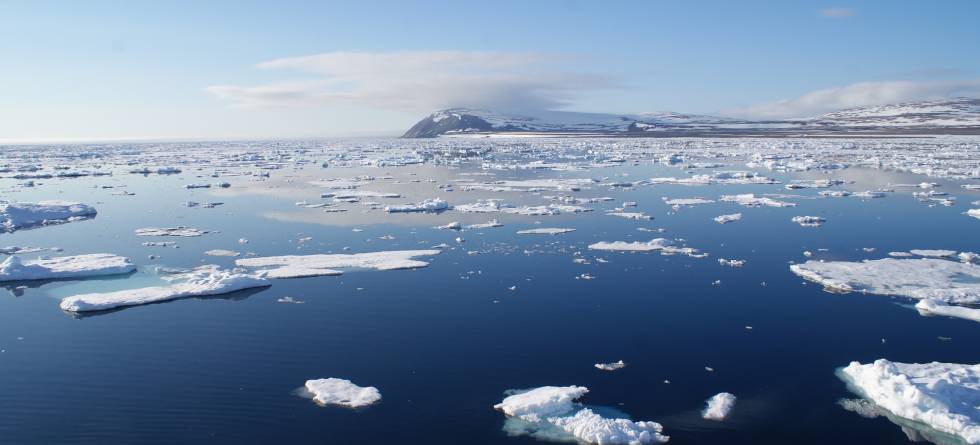The dramatic decline in Arctic sea ice is the symbol of the current climate change due to global warming and higher CO2 concentrations in the atmosphere. Sea ice is an important component of our climate system.
The high reflectivity of sea ice (albedo) returns the shortwave, warming radiation of the sun directly back into space. As a result, sea ice contributes significantly to the polar and global cooling of our planet, whereas solar energy is absorbed by the ice-free ocean. Further, even a thin layer of sea ice prevents the heat flow from the ocean into the atmosphere.
In her dissertation, Caroline Clotten studied sea ice distribution in the Iceland Sea and the Labrador Sea in the Pliocene (~ 3-5 million years ago), a period in the Earth's history characterized by global CO2 concentrations and temperatures comparable to today.
From sediment cores, she has extracted organic chemical components (biomarkers) produced by small algae that live in the sea ice. When the sea ice melts, these components sink to the bottom of the sea, marking the extent of sea ice at a certain time.
The results of the study indicate that sea ice first occurred in the early Pliocene, probably due to the formation of the East Greenland Current. In the middle Pliocene, sea ice occurred more frequently in the Icelandic Sea than in the Labrador Sea, which was probably related to the strength and direction of the East Greenland Current and Gulf Stream.
A stronger Gulf Stream prevented the advance of the East Greenland Current including sea ice to the Labrador Sea. In the late Pliocene, there was more sea ice in the Labrador Sea than in the Icelandic Sea, possibly related to a weak Gulf Stream and stronger East Greenland Current.
The results of this dissertation show that sea ice was present in the subarctic sea despite warm temperatures and high CO2 levels, but its distribution was depending on the ocean current strengths. The new findings can help improve climate models that predict the fate of sea ice in a future warmer world with higher CO2 concentrations.

